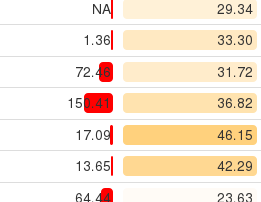Create a nice looking table using R
Hi everyone, Today I will introduce formattable. This package is designed for applying formatting on vectors and data frames to make data presentation easier, richer, more flexible and hopefully convey more information. We will see how to use this package to interpret your data at a glance, with just a few lines of code (You can follow along below as well as check all the code in my git). Before going further, I will specify that this package is generally used [...]



